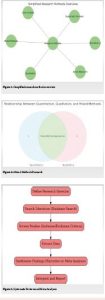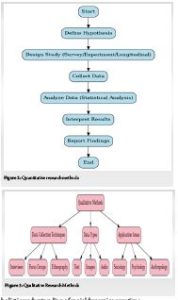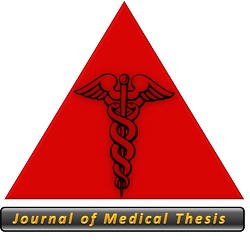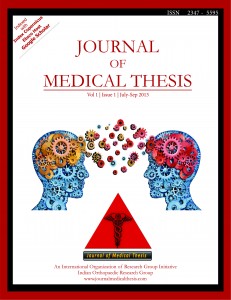Tag Archives: Research publication
Exploring Different Methods of Study in Research: A Comprehensive Guide
Vol 10 | Issue 2 | July-December 2024 | page: 03-06 | Sachin Kale, Arvind Vatkar, Ashok Shyam, Nikhil Hiwrale, Ojasv Gehlot, Abhishek Agarwal
https://doi.org/10.13107/jmt.2024.v10.i02.223
Author: Sachin Kale [1], Arvind Vatkar [2], Ashok Shyam [3], Nikhil Hiwrale [1], Ojasv Gehlot [1], Abhishek Agarwal [1]
[1] Department of Orthopaedics, D Y Patil Hospital, Navi Mumbai, Maharashtra, India.
[2] Department of Orthopaedics, MGM Medical College, Navi Mumbai, Maharashtra, India.
[3] Department of Orthopaedics, Sancheti Institute for Orthopaedics and Rehabilitation, Pune, Maharashtra, India.
Address of Correspondence
Dr. Sachin Kale
Department of Orthopaedics, D Y Patil Hospital, Navi Mumbai, Maharashtra, India.
E-mail: sachinkale@gmail.com
Editorial
Research forms the backbone of academic inquiry and innovation, offering pathways to discover, understand, and solve complex problems. Central to this endeavor is the selection of a suitable method of study, a decision that profoundly influences the reliability, validity, and impact of findings. In this editorial, we delve into the primary methods of research, exploring their characteristics, applications, and considerations in minute detail.

________________________________________
1. Quantitative Research Methods
Quantitative research emphasizes numerical data and statistical analysis. It is ideal for studies aiming to quantify relationships, test hypotheses, or derive generalizable patterns. Common quantitative approaches include:
• Surveys: Structured tools designed to collect data from large populations efficiently. These can be administered through various mediums such as online platforms, telephone interviews, or face-to-face interactions. Surveys excel in capturing trends, opinions, and behaviors but require careful design to avoid bias and ensure reliability.
• Experiments: Controlled investigations that manipulate variables to establish cause-and-effect relationships. These studies often utilize control and experimental groups, ensuring valid comparisons. Rigorous design, including randomization and blinding, enhances the reliability of results.
• Longitudinal Studies: Observational research conducted over extended periods to analyze changes and trends. For example, tracking health outcomes in a cohort over decades provides insights into disease progression and risk factors.
Quantitative methods are particularly powerful in disciplines such as economics, epidemiology, and education, where robust, objective data is paramount. However, their reliance on structured data collection instruments requires meticulous planning to ensure accuracy and relevance.
________________________________________
2. Qualitative Research Methods
Qualitative research focuses on understanding phenomena through non-numerical data such as words, images, or behaviors. It seeks to uncover deep insights into motivations, perceptions, and social dynamics. Prominent qualitative techniques include:
• Interviews: In-depth discussions with participants, ranging from structured formats to free-flowing conversations. These allow researchers to probe personal experiences, capturing rich, detailed narratives.
• Focus Groups: Interactive group discussions that explore collective opinions or behaviors. The dynamic nature of focus groups facilitates the emergence of diverse perspectives.
• Ethnography: Immersive studies that observe cultural or social practices within their natural context. Ethnographers often integrate themselves into communities, enabling a holistic understanding of social dynamics over time.
This method excels in fields like sociology, anthropology, and psychology, where exploring human experiences and cultural phenomena is vital. While qualitative research offers depth and nuance, it demands careful consideration of researcher bias and interpretation.
________________________________________
3. Mixed-Methods Research
Mixed-methods research combines the strengths of quantitative and qualitative approaches, enabling a more comprehensive understanding of research questions. Approaches include:
• Sequential Design: Conducting one type of research (e.g., quantitative) followed by the other (e.g., qualitative) to enrich findings.
• Concurrent Design: Simultaneously collecting quantitative and qualitative data to provide complementary insights.
• Embedded Design: Emphasizing one approach while using the other as a supplementary tool.
For example, a study on educational outcomes might use surveys to gather broad trends and follow up with interviews to explore underlying factors in detail. Mixed methods are invaluable in interdisciplinary research, addressing complex questions that require diverse perspectives.
 ________________________________________
________________________________________
4. Systematic Reviews and Meta-Analyses
These methods synthesize existing research, offering comprehensive insights:
• Systematic Reviews: Rigorous evaluations of all relevant studies on a specific topic. Researchers follow strict inclusion criteria to ensure unbiased and thorough analysis.
• Meta-Analyses: Statistical techniques that aggregate data from multiple studies to identify overarching trends. This method increases statistical power and clarifies conflicting findings across individual studies.
These approaches are pivotal in evidence-based disciplines like medicine, where decisions often rely on the aggregation of high-quality evidence. By identifying gaps and inconsistencies in existing research, they also guide future investigations.
________________________________________
5. Case Studies
Case studies offer an in-depth exploration of a single entity, event, or phenomenon. This method provides a detailed understanding of unique or complex cases, such as a groundbreaking technological innovation or a rare medical condition.
Researchers often combine various data collection techniques—interviews, observations, and archival analysis—to construct comprehensive narratives. While case studies yield rich insights, their findings are typically specific and may not be generalizable.
In fields like business, law, and clinical psychology, case studies serve as practical exemplars, providing valuable lessons and strategies for application.
________________________________________
6. Action Research
Action research integrates inquiry and practical application, emphasizing iterative cycles of reflection and improvement. It is particularly suited to professional environments, such as education and organizational management. The process involves:
1. Identifying a Problem: Collaborating with stakeholders to pinpoint an issue.
2. Planning an Intervention: Designing a strategy to address the problem.
3. Implementing the Plan: Acting on the strategy while monitoring its impact.
4. Reflecting and Revising: Analyzing results and refining approaches for future iterations.
Action research empowers participants, fostering collaboration and ensuring the research directly addresses real-world challenges. Its iterative nature facilitates continuous learning and improvement.
________________________________________
7. Observational Studies
Observational research involves studying subjects in their natural environments without manipulation. Key types include:
• Cross-Sectional Studies: Observations at a single point in time to identify patterns or correlations.
• Cohort Studies: Longitudinal studies tracking specific groups with shared characteristics. These are widely used in epidemiology to study disease progression or risk factors.
Observational studies are invaluable for generating hypotheses and understanding real-world behaviors. However, they require careful design to mitigate biases, as the lack of experimental control can complicate causal inferences.
________________________________________
Choosing the Right Method
Selecting an appropriate research method is a strategic decision influenced by:
• Research Goals: For hypothesis testing, quantitative methods may be optimal; for exploring complex behaviors, qualitative approaches may be preferable.
• Resources: Time, funding, and access to participants often dictate feasible methods.
• Ethical Considerations: Ensuring informed consent, confidentiality, and minimizing harm are paramount.
Scholars must also consider the balance between depth and breadth, often weighing the trade-offs of detailed exploration versus broad generalization.
________________________________________
Conclusion
The diversity of research methods reflects the complexity of the questions scholars aim to address. Each approach—from the precision of quantitative studies to the depth of qualitative insights—offers unique advantages and challenges. By carefully aligning their research questions, resources, and ethical considerations with their chosen method, researchers can generate findings that are not only robust but also transformative. Thoughtful selection and execution of research methods ultimately drive academic and societal progress, underscoring the enduring power of inquiry.
| How to Cite this Article: Kale S, Vatkar A, Shyam A, Hiwrale N, Gehlot O, Agarwal A. Exploring Different Methods of Study in Research: A Comprehensive Guide. Journal Medical Thesis. 2024 July-December; 10(2):4-6. |
Full Text PDF | Full Text HTML
Crafting the Ideal Thesis: A Journey Toward Academic Excellence
Vol 10 | Issue 2 | July-December 2024 | page: 1-3 | Sachin Kale, Arvind Vatkar, Ashok Shyam, Nikhil Hiwrale, Ojasv Gehlot, Abhishek Agarwal
https://doi.org/10.13107/jmt.2024.v10.i02.222
Author: Sachin Kale [1], Arvind Vatkar [2], Ashok Shyam [3], Nikhil Hiwrale [1], Ojasv Gehlot [1], Abhishek Agarwal [1]
[1] Department of Orthopaedics, D Y Patil Hospital, Navi Mumbai, Maharashtra, India.
[2] Department of Orthopaedics, MGM Medical College, Navi Mumbai, Maharashtra, India.
[3] Department of Orthopaedics, Sancheti Institute for Orthopaedics and Rehabilitation, Pune, Maharashtra, India.
Address of Correspondence
Dr. Sachin Kale
Department of Orthopaedics, D Y Patil Hospital, Navi Mumbai, Maharashtra, India.
E-mail: sachinkale@gmail.com
Editorial
Introduction
The academic thesis represents the culmination of a scholar's intellectual journey, a work that encapsulates years of study, exploration, and analysis. It is not merely a document fulfilling a requirement but an artifact of scholarly rigor, creativity, and meticulous effort. Crafting an ideal thesis is a nuanced process, blending the art of storytelling with the precision of scientific inquiry. It involves an intricate balance of structure and innovation, where each component serves a distinct purpose in shaping a cohesive narrative. This editorial explores the critical elements of an ideal thesis in greater depth, offering a comprehensive guide to aspiring scholars.
The Pillars of an Ideal Thesis
1. Clear and Focused Research Question
The cornerstone of a strong thesis is a clearly defined research question or hypothesis. This element acts as the guiding star, shaping the study’s direction and ensuring coherence. A robust research question should be:
• Specific: Narrow enough to address particular aspects of a problem without being overly restrictive.
• Researchable: Feasible to investigate within the constraints of available time, resources, and data.
• Significant: Addressing a meaningful gap or unresolved issue in the field.
For instance, instead of broadly tackling "climate change impacts," a more focused question might be, "How does climate change affect agricultural yields in sub-Saharan Africa over the past two decades?" This clarity anchors the research, providing a clear trajectory and purpose. Scholars must invest substantial time in refining their research question, as this step determines the study’s scope and impact.
2. Comprehensive Literature Review
A literature review is more than a survey of existing studies; it is an intellectual synthesis that situates the thesis within the broader academic landscape. This section should achieve the following:
• Identify Key Frameworks: Highlight the seminal theories, models, and concepts that underpin the field.
• Critically Analyze Trends: Examine patterns, debates, and inconsistencies within existing research.
• Highlight Gaps: Identify unresolved questions or emerging areas of interest that the thesis seeks to address.
An effective literature review weaves these elements into a cohesive narrative, demonstrating the scholar’s command of the field and providing a foundation for their research. It also underscores the study’s originality, linking the research question to broader academic discourse. Instead of merely summarizing prior studies, the review should critique methodologies, identify contradictions, and justify the chosen focus.
3. Methodological Rigor
The methodology section serves as the research blueprint, detailing the "how" of the study. A well-executed methodology not only enhances the thesis’s credibility but also ensures its replicability. Key attributes of methodological rigor include:
• Appropriateness: Selecting methods that align with the research question, whether qualitative (e.g., interviews, ethnography), quantitative (e.g., surveys, experiments), or mixed methods.
• Justification: Providing a clear rationale for choosing specific methods, supported by theoretical and practical considerations.
• Transparency: Offering detailed descriptions of procedures, instruments, and analytical techniques to enable replication.
Acknowledging and addressing methodological limitations is equally critical. For instance, if data collection relies heavily on self-reported surveys, the researcher should discuss potential biases and how they were mitigated. This transparency reinforces the study’s validity and trustworthiness.
4. Original Contribution
Originality is the hallmark of a significant thesis, distinguishing it from existing work. Original contributions can take several forms:
• Empirical Data: Presenting novel findings derived from experiments, surveys, or fieldwork.
• Theoretical Innovation: Proposing new models, frameworks, or perspectives that challenge conventional paradigms.
• Practical Applications: Offering solutions to real-world problems, bridging the gap between theory and practice.
The thesis should articulate this originality explicitly, detailing how it advances the field or addresses a pressing societal issue. For instance, a thesis proposing a new method to enhance solar energy efficiency could highlight its implications for sustainable development and energy policy.
5. Logical Structure and Organization
An ideal thesis adheres to a logical structure that facilitates clarity and engagement. While formats may vary across disciplines, a common structure includes:
1. Introduction: Introducing the research question, objectives, significance, and context.
2. Literature Review: Establishing the theoretical and empirical background.
3. Methodology: Explaining the research design and processes.
4. Results: Presenting findings in a clear and systematic manner.
5. Discussion: Interpreting results, linking them to the research question and existing literature.
6. Conclusion: Summarizing insights, discussing implications, and suggesting future research directions.
Clear transitions between sections and a consistent narrative thread are essential, ensuring the thesis reads as a cohesive whole rather than a series of disconnected parts.
6. Engaging Writing Style
Effective communication is the bridge between academic rigor and accessibility. An ideal thesis achieves this balance by:
• Prioritizing Clarity: Avoiding unnecessary jargon and convoluted sentences.
• Embracing Conciseness: Expressing ideas succinctly while preserving depth.
• Utilizing Active Voice: Enhancing readability and immediacy.
• Maintaining Consistency: Adhering to a uniform tone and style throughout the document.
An engaging writing style not only enhances readability but also broadens the thesis’s impact, making it accessible to both specialists and non-specialists.
7. Thorough Analysis and Insightful Interpretation
The analysis transforms raw data into meaningful insights, forming the thesis’s intellectual core. Effective analysis involves:
• Alignment: Ensuring the analysis directly addresses the research objectives and question.
• Depth: Delving beyond surface-level observations to uncover deeper patterns and implications.
• Transparency: Clearly explaining the analytical techniques and processes used.
Interpretation is equally critical, involving:
• Connecting Findings: Relating results back to the research question and literature.
• Highlighting Implications: Discussing the broader significance of findings.
• Addressing Unexpected Outcomes: Exploring unanticipated results and their potential impact.
This dual focus on analysis and interpretation adds depth and richness to the thesis, showcasing the scholar’s intellectual agility.
8. Critical Reflection
An ideal thesis does not shy away from its limitations; instead, it embraces them as opportunities for future inquiry. Critical reflection includes:
• Discussing Constraints: Acknowledging the limitations of chosen methods and data.
• Identifying Biases: Addressing potential biases in data collection, analysis, or interpretation.
• Suggesting Future Research: Highlighting areas where further investigation is needed to build on the thesis’s findings.
This reflective approach demonstrates intellectual maturity, lending credibility and balance to the study.
9. Professional Presentation
The presentation of a thesis reflects the scholar’s attention to detail and professionalism. Essential elements include:
• Formatting: Adhering to institutional or publication guidelines for structure, citations, and layout.
• Proofreading: Ensuring the text is free of grammatical, typographical, and formatting errors.
• High-Quality Visuals: Incorporating clear and well-designed tables, graphs, and illustrations to support the narrative.
Professional presentation not only enhances readability but also underscores the scholar’s commitment to excellence.
10. Alignment with Ethical Standards
Ethical integrity is a cornerstone of credible scholarship. An ideal thesis upholds ethical standards by:
• Securing Permissions: Obtaining approvals for data collection and use of proprietary materials.
• Transparency: Clearly disclosing research processes, funding sources, and potential conflicts of interest.
• Avoiding Plagiarism: Ensuring all sources are properly attributed and cited.
Adherence to ethical standards safeguards the thesis’s credibility and contributes to the integrity of the academic community.
Conclusion
Crafting the ideal thesis is a demanding yet rewarding endeavor, one that requires meticulous planning, disciplined execution, and thoughtful reflection. By embracing the principles outlined above, scholars can produce theses that not only meet academic standards but also make meaningful contributions to their fields. Ultimately, an ideal thesis is more than a requirement; it is a legacy of intellectual excellence, a beacon for future research, and a testament to the scholar’s dedication to advancing knowledge.
| How to Cite this Article: Kale S, Vatkar A, Shyam A, Hiwrale N, Gehlot O, Agarwal A. Crafting the Ideal Thesis: A Journey Toward Academic Excellence. Journal Medical Thesis. 2024 July-December ; 10(2): 1-3. |
Full Text PDF | Full Text HTML






